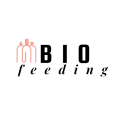Discovering Biomimetic Feeding: A Natural Approach to Infant Nutrition
An Introduction to Biomimetic Feeding
Biomimetic feeding, a relatively new concept, is gaining traction in the world of infant nutrition. This approach emulates the natural breastfeeding process, aiming to provide infants with a feeding experience that closely resembles nursing from maternal breast. By imitating the human breastfeeding mechanism, it aims to ensure optimal digestion and nutrient absorption for your child.
The premise of biomimetic feeding is rooted in the understanding of the biological and physiological needs of infants. It takes into consideration that a newborn’s digestive system is not yet fully developed, hence it needs to receive nutrition in a manner that is easy to digest.
The Importance of Natural Baby Feeding
Natural baby feeding is vital for several reasons:
- It promotes proper growth and development. Natural feeding provides all the nutrients your baby needs for optimal growth.
- It strengthens the baby’s immune system. Breast milk contains antibodies that help your baby fight off viruses and bacteria.
- It supports emotional bonding. The physical closeness, skin-to-skin touching, and eye contact during feeding all help your baby bond with you and feel secure.
However, not all mothers can breastfeed their children. Some may have health problems, while others may find it difficult to produce enough milk. These situations call for alternative yet equally effective feeding solutions—one of them being biomimetic feeding.
How Does Biomimetic Feeding Work?
Biomimetic feeding aims to replicate the natural, dynamic and variable breastfeeding process as closely as possible. It involves using specially designed feeding systems that emulate a mother’s breast in terms of milk flow, temperature and composition.
Feeding bottles and teats used in biomimetic feeding are designed to facilitate an infant’s instinctive feeding behavior. These encourage the same peristaltic swallowing motion used during breastfeeding, promoting healthier oral and jaw development.
Biomimetic Feeding: A Scienfitic Perspective
According to a study published in the ScienceDirect journal, the biomimetic approach to infant feeding promises several benefits. It is seen as a valuable tool in supporting the infant’s natural instinctive behavior, such as suckling, breathing, and swallowing, while ensuring that the infant receives nutrients in an easy-to-digest manner.
Making the Right Choice for Your Baby
Choosing the right infant feeding method can be a daunting task for new parents. With the promising benefits of biomimetic feeding, it offers a natural and scientific-backed alternative for mothers who cannot breastfeed, or for parents looking for a feeding method that closely mirrors breast feeding.
Remember, it’s always crucial to consult your baby’s pediatrician or a lactation consultant before making the switch.
Wrapping Up: Exploring More about Biomimetic Feeding
This is just the half of our exploration about biomimetic feeding. Stay tuned with us for more insights about this natural baby feeding method, how to effectively incorporate it in your baby’s daily nutrition, and how it can be a part of your minimalist parenting approach.
Moving Towards Biomimetic Bottle Feeding
If breastfeeding isn’t possible or if a parent is looking for a supplemental feeding option, biomimetic bottle feeding can be a suitable option. Several specially designed baby bottles are available in the market that simulate the natural breastfeeding process, supporting a smooth transition from breast to bottle feeding.
As explored in the `Tips for Smooth Bottle Feeding Transition` article, with the right implement, your baby can experience a smooth transition without causing nipple confusion. This way, they can switch between bottle feeding and breastfeeding, if necessary, with minimal fuss.
Incorporating Biomimetics in Feeding Equipment
Biomimetics, as `Wikipedia` defines, is a design discipline that seeks to draw inspiration from nature to develop solutions for human problems. In biomimetic feeding, biomimetic principles are incorporated in designing feeding equipment.
For instance, the flow rate and shape of the bottles’ teats are designed to closely mimic the mother’s nipple, interacting naturally with the infant’s mouth. In the same vein, the milk content is kept at a temperature that matches the mother’s body temperature, making it feel natural to the infant. This level of precision and replication is only possible with advancements in biomimicry.
Understanding the Health Benefits of Biomimetic Feeding
From a health perspective, the `appropriately named ‘healthier option’` biomimetic feeding has many advantages. The natural feeding rhythm in biomimetic feeding ensures the baby does not swallow air, reducing the risk of gas or colic. Moreover, the nutrient content is also not compromised, with some brands delivering a mix that closely mimics mother’s milk.
Biomimetic Feeding and Colic
Biomimetic feeding can also help manage colic — a condition where healthy babies cry excessively for no apparent reason. A study published by the `Royal Society of Chemistry` suggests that the air-free feeding of biomimetic feeding systems helps reduce the symptoms of colic, bringing relief to both the baby and the parent.
Final Thoughts: A Natural Shift to Biomimetic Feeding
As we dive deeper into the world of biomimetic feeding, its merits stand out: it caters to the infant’s physiological needs while maintaining the benefits of natural feeding. With these unique advantages, biomimetic feeding provides an effective feeding solution, irrespective of the parent’s choice or necessity to bottle-feed. Remain tuned with us, as we continue our exploration and uncover more about this innovative approach to infant feeding.

